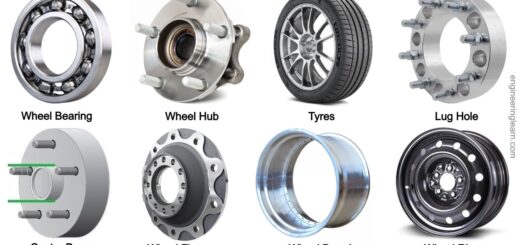Types of Tyres: Functions, Properties, Components [Complete Guide]
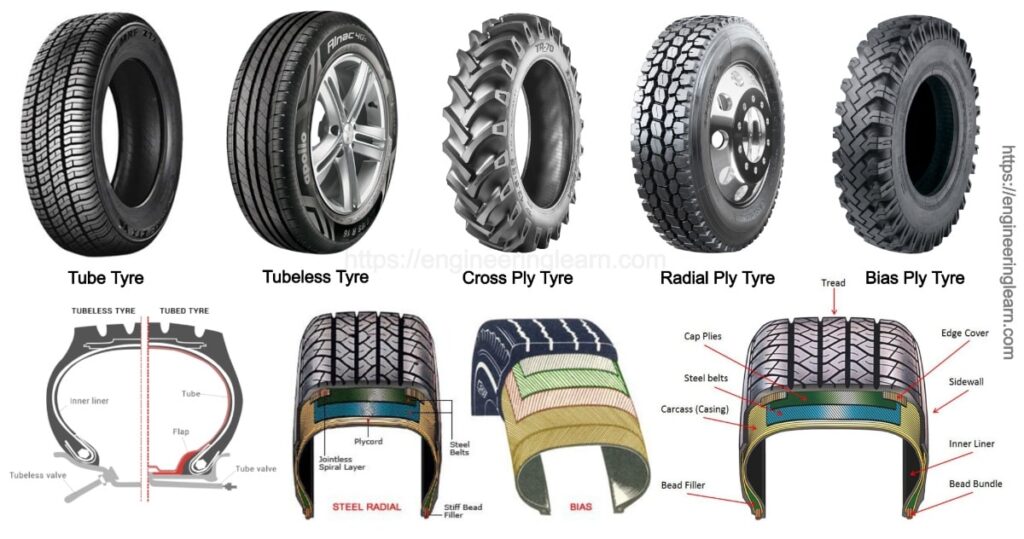
Types of Tyres: – Tires are considered as the most important part of your automobile because they affect almost every performance factor like braking, acceleration, handling and comfort.
It provides good grip to the surface to avoid slipping and skidding condition so that it can work well on dry and wet road.
Functions of Tyres
• It supports the load on vehicles
• It absorbs shock during motion
• It enables to take turn to left or right
• It helps to get best acceleration and braking
Properties of Tyres
1. Non-skidding: – The tyre should have good grip so that it can overcome skidding.
2. Noise resistant: – There should be minimum noise from tyre during driving.
3. Optimum Load carrying capacity: – The tyre size and material should be selected in such a way that it can carry vehicle load and withstand with fluctuating stress during revolution.
4. Minimum power consumption: – Tyre transmits power from engine to road so there should be minimum power loss in tyre to get better efficiency.
5. Uniform wear: – The wear around the tyre should be uniform so that there is no issue of unbalancing.
6. Should be well balanced: – The weight and dimensions of all tyre are such that, that it is dynamically balanced.
7. Satisfactory cushioning: – The tyre should have good shock absorbing property so that it can absorb vibrations by road to provide cushioning effect.
Main Components of Tyres
1. Belts: ( Components of Tyre )
These are rubber-coated layers of rayon, steel, fiberglass and other materials which are located in mid of the tread and plies, across at angles, which hold the plies in place. It provides resistance to punctures and help treads to in contact with the road.
2. Sipes: ( Components of Tyre )
These are special kind treads within the tread which improves tractive effort on different road surfaces.
3. Tread: ( Components of Tyre )
It is the portion of the tire that comes in directly contact with the road. It should have higher strength and good heat dissipation property for good life of tyre.
4. Grooves: ( Components of Tyre )
It is the spaces provided on the outer layer of tyre which comes in contact with road. It provides space for water to flow and friction.
5. Shoulder: ( Components of Tyre )
It is the outer edge of the tread which wraps into the sidewall area.
6. Sidewall: ( Components of Tyre )
It is the portion of tyre which is exposed to environment and not come in contact with road . It protects cord plies. it is also used to feature tyre markings and information such as tyre size and type.
7. Inner Liner: ( Components of Tyre )
It is the innermost layer of a tubeless tyre. It prevents the flow of air from inside to outside and vice versa.
Types of Tyres (Types of Tires)
A) On the Basis of Tube used:
1. Tube Tyre: ( Types of Tyres )
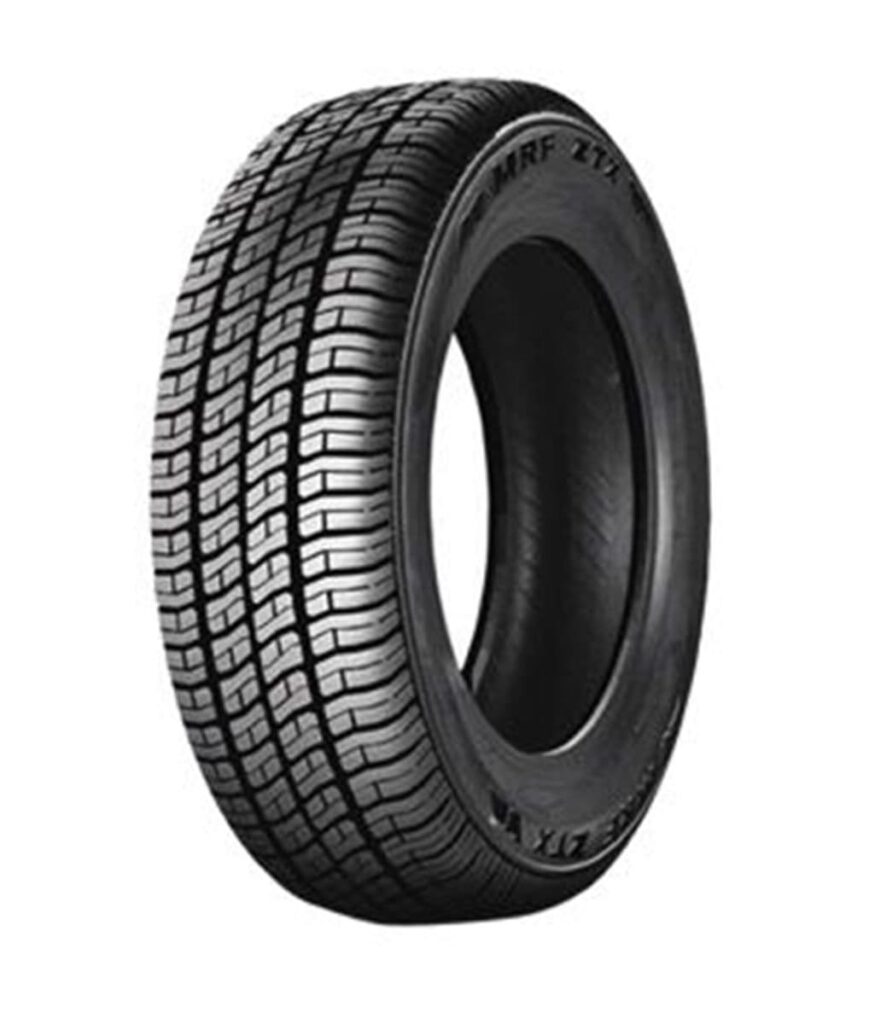
It is the most commonly used kind of tyre. It encloses a rubber tube which is filled with air at high pressure. The outer part is made of synthetic rubber which is known as tread. Inside tyre beads are formed with the help of reinforced steel wires. Beads works as strong support for wheel rim. A number of piles are formed by rayon cords. Cords provide strength to the tyres.
2. Tubeless Tyre: ( Types of Tyres )
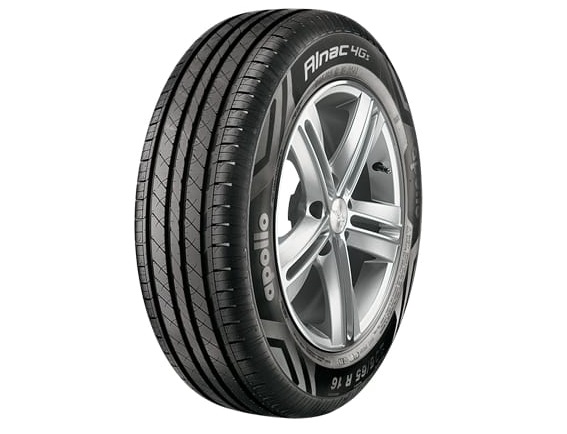
In current time use of this tyre are continuously increasing. This tyre does not enclose tube. The high pressure air is filled in tyre itself. The internal features and construction of this tyre are same as tube tyre. An NRV (non-return valve) is fitted to the rim for air filling.
These tyres are lighter and cooler than tube tyre. The main advantage of this is that is keeps air for long time even after being punctured and hole in tubeless tyre can easily be repaired. These tyres are also known as pneumatic tyres.
Advantages of Tubeless Tyre
- These tyres provide better cooling.
- They enhance the ride quality and make it comfortable.
- These tyres permit slower leakage of air.
- They have a rather simple assembly.
- These tyres have less weight.
B) On the Basis of Construction:
1. Cross Ply Tyre Construction: ( Types of Tyres )
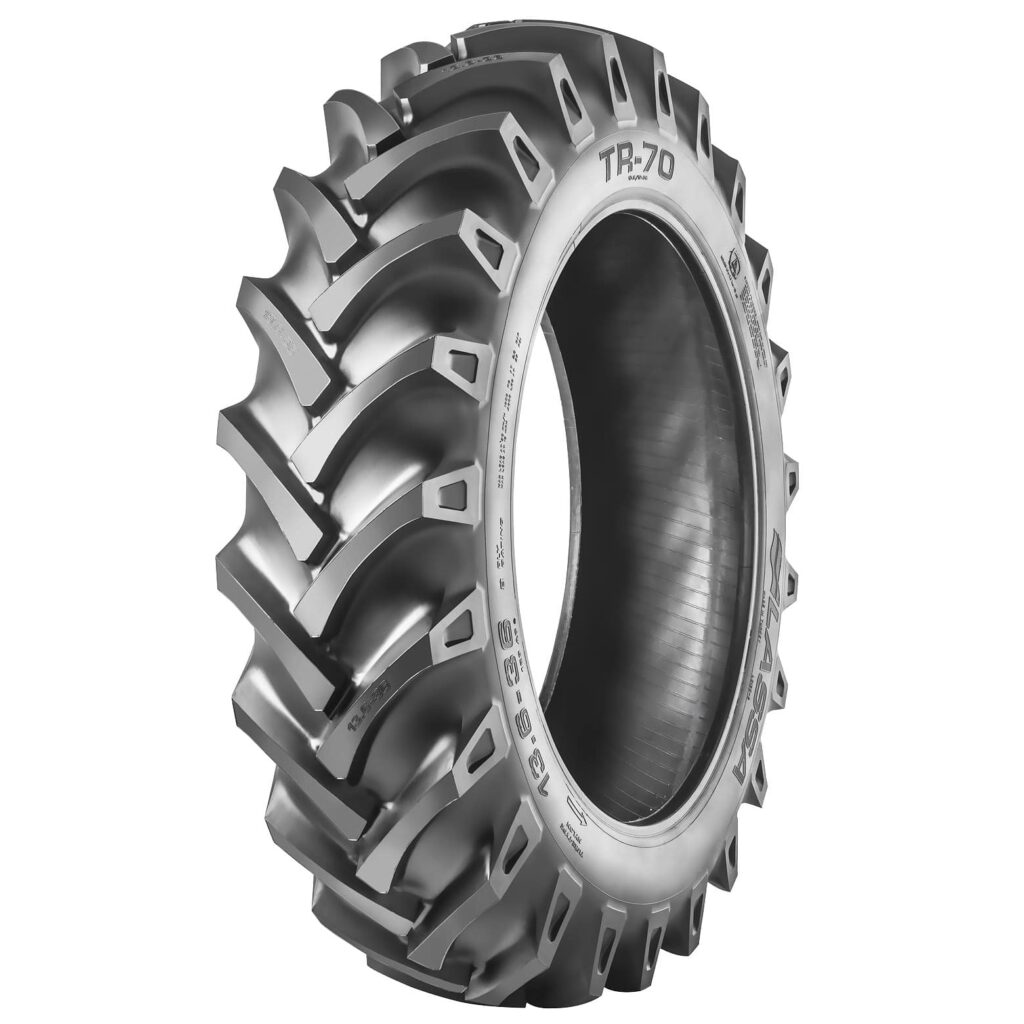
It is also known as bias ply tyre construction. This tyre has better a resistance against wear. They have good bonding to the road. Cross ply tyres consist of carcass layers made from nylon cord which are placed diagonally along each other in the tread and the sidewalls, at an angle of 50 degrees.
Multiple rubber plies stacked over each other which form a thick layer, which makes them less flexible as a result they are more sensitive to overheating. These tyres give a strong and rigid sidewall.
Advantages of Cross Ply Tyre
- These tyres provide high vehicle stability.
- They also provide good resistance against sidewall damages.
- These tyres are economical as their production is cheaper.
Disadvantages of Cross Ply Tyre
- Due to the rolling resistance these tires heat up quickly.
- Cross ply tires being rigid, prove to be less comfortable.
- Due to high resistance of the tire, the fuel consumption is high.
2. Radial Ply Tyre Construction: ( Types of Tyres )
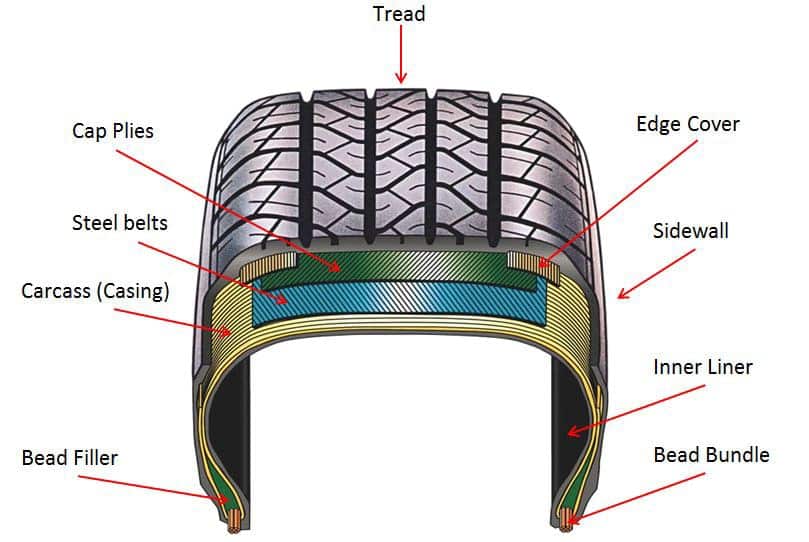
It consists of a carcass ply which is formed by textile arcs running one bead to the other. Each ply embedded at an angle of 90 degree to the rolling direction. At the top of tyre crown several plies is reinforced with metal wire on the top of carcass ply.
Advantages of Radial Ply Tire
• These tyres have a lower rolling resistance loss which leads to less fuel consumption.
• They have a longer tread life as less heat generated.
• They provide better braking efficiency.
• They have larger resistance to punctures and cuts.
Disadvantages of Radial Ply Tire
- These tyres have a steel belt due to which it does not fare well against minor bumps in the road.
- Their soft sidewalls are vulnerable.
- Due to harder tread they make huge noise.
Image Source :- Tyremarket, Finixx, Carbiketech,


